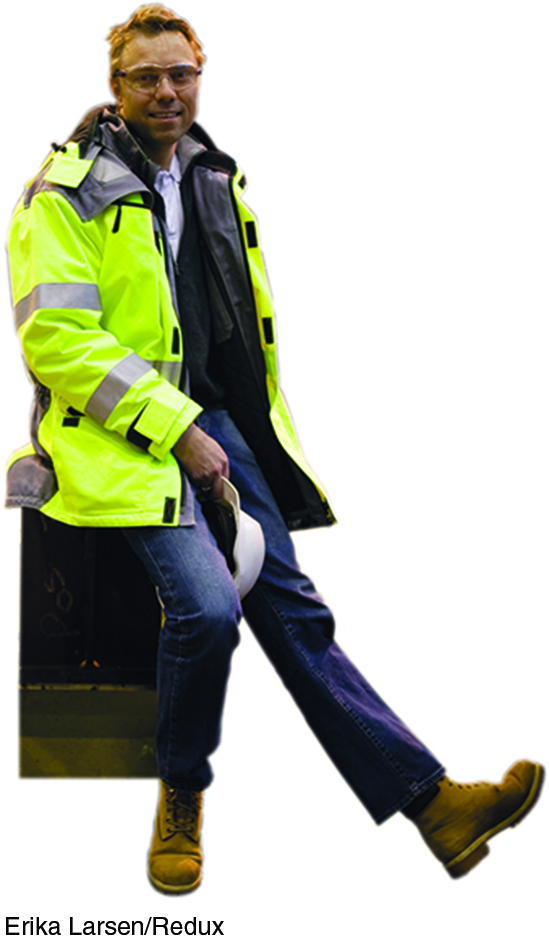11.8 Business Case
BUSINESS CASE
BUSINESS CASE
Hunting Endangered Animals to Save Them
John Hume’s Mauricedale ranch occupies 16,000 square miles in the hot, scrubby grasslands of South Africa. There Hume raises endangered species, such as rhinos, and nonendangered species, such as Cape buffalo, antelopes, hippos, giraffes, zebras, and ostriches. From revenues of around $2.5 million per year, the ranch earns a small profit, with 20% of the revenues coming from trophy hunting and 80% from selling live animals.
Although he entered this business to earn a profit, Hume sees himself as a conservator of these animals and this land. And he is convinced that to protect rhinos, some legalized hunting of them is necessary. The story of one of Hume’s male rhinos, named “65,” illustrates his point. Hume and his staff knew that 65 was a problem: too old to breed, he was belligerent enough to kill younger male rhinos. He was part of what wildlife conservationists call the “surplus male problem,” a male whose presence inhibits the growth of the herd.

Eventually, Hume obtained permission for the hunting of 65 from CITES (Convention on International Trade in Endangered Species) that regulates the trade and legalized hunting of endangered species. A wealthy hunter paid Hume $150,000, and the troublesome 65 was quickly dispatched.
Conservationist ranchers like Hume, who advocate regulated hunting of wildlife, point to the experience of Kenya to buttress their case. In 1977, Kenya banned the trophy hunting or ranching of wildlife. Since then, Kenya has lost 60% to 70% of its large wildlife through poaching or conversion of habitat to agriculture. Its herd of black rhinos, once numbered at 20,000, now stands at about 540, surviving only in protected areas. In contrast, since regulated hunting of the less endangered white buffalo began in South Africa in 1968, its numbers have risen from 1,800 to 19,400.
Many conservationists now agree that the key to recovery for a number of endangered species is legalized hunting on well-
However, legalized hunting is a very controversial policy, strongly opposed by some wildlife advocates. Because establishing a ranch like Mauricedale requires a huge capital investment, many are concerned that smaller, fly-
QUESTIONS FOR THOUGHT
Using the concepts you learned about in the discussion of public goods in Chapter 10, explain the economic incentives behind the huge losses in Kenyan wildlife.
Compare the economic incentives facing John Hume with those facing a Kenyan rancher.
What regulations should be imposed on a rancher who sells opportunities to trophy hunt? Relate these to the concepts you learned about in the discussion of public goods in Chapter 10.
BUSINESS CASE
BUSINESS CASE
Welfare State Entrepreneurs
“Wiggo Dalmo is a classic entrepreneurial type: the Working Class Kid Made Good.” So began a profile in Inc. magazine. Dalmo began as an industrial mechanic who repaired mining equipment for a large company. Eventually, he decided to start his own business. Momek, the company he founded, eventually grew into a $44 million, 150-

You can read stories like this all the time in U.S. business publications. What is unusual about this case is that Dalmo and his company aren’t American, they’re Norwegian—
Why? After all, the financial rewards for being a successful entrepreneur are more limited in a country like Norway, with its high taxes, than they are in the United States, with its lower taxes. But there are other considerations. For example, until the Affordable Care Act kicked in in 2014, Americans thinking of leaving a large company to start a business needed to worry about whether they would be able to get health insurance, whereas Norwegians in the same position were assured of health care regardless of employment. And the downside of failure is larger in the U.S. system, which offers minimal aid to the unemployed.
Still, is Wiggo Dalmo an exceptional case? Table 11-7 shows the nations with the highest level of entrepreneurial activity, according to a study financed by the U.S. Small Business Administration, which tried to quantify the level of entrepreneurial activity in different nations. The United States is at the top of the list, but so are several Scandinavian countries which have very high levels of taxation and extensive social insurance. (Norway, for example, is number 14.)
The moral is that when comparing how business friendly welfare state systems really are, you have to think a bit past the obvious question of the level of taxes.
| Rank | Country |
| 1 | United States |
| 2 | Australia |
| 3 | Sweden |
| 4 | Denmark |
| 5 | Switzerland |
| 6 | Taiwan |
| 7 | Finland |
| 8 | Netherlands |
| 9 | United Kingdom |
| 10 | Singapore |
|
Data from: The Global Entrepreneurship and Development Index 2014, by Zoltan Acs, Laszlo Szerb, and Erkko Autio. |
|
QUESTIONS FOR THOUGHT
Why does Norway have to have higher taxes overall than the United States?
This case suggests that government-
paid health care helps entrepreneurs. How does this relate to the arguments for social insurance in the text? How would the incentives of people like Wiggo Dalmo be affected if Norwegian health care was means-
tested instead of available to all?